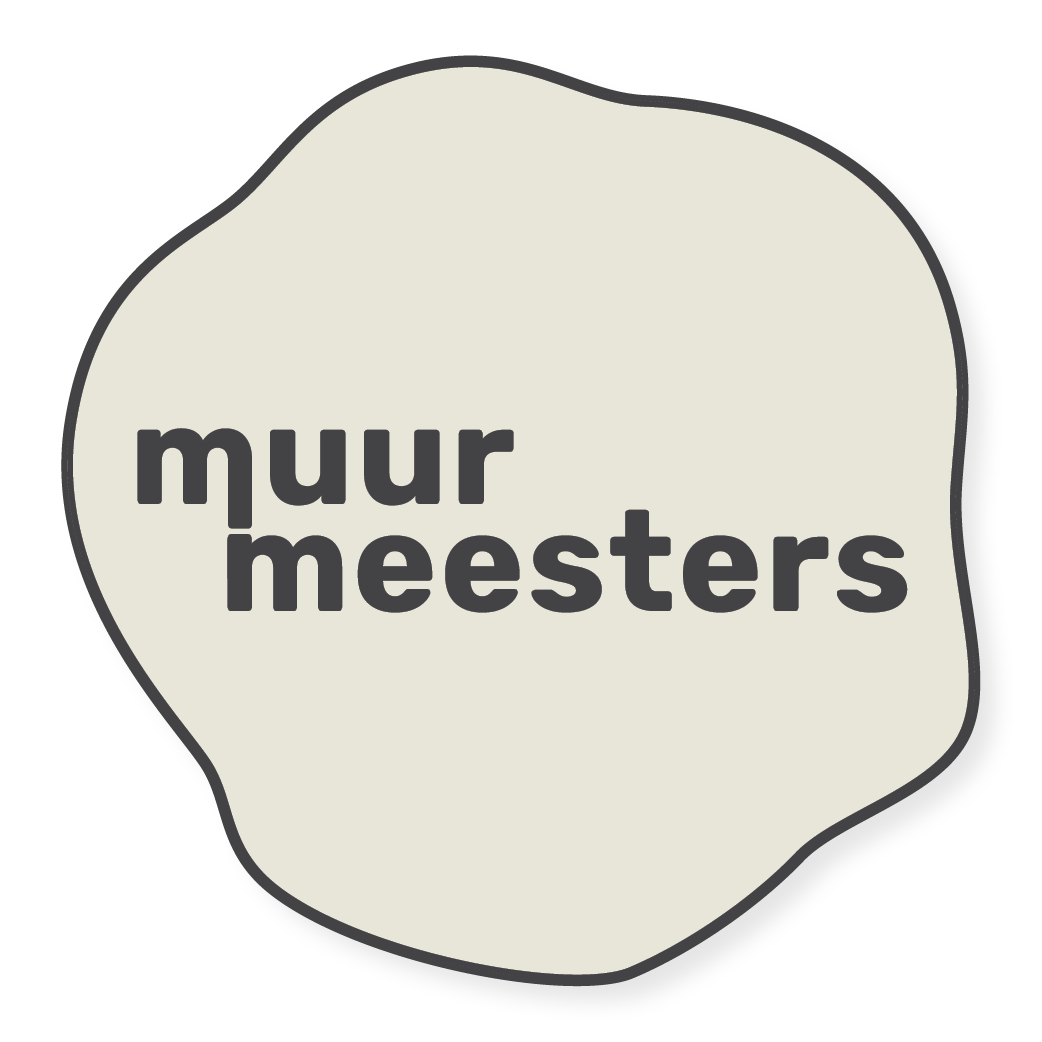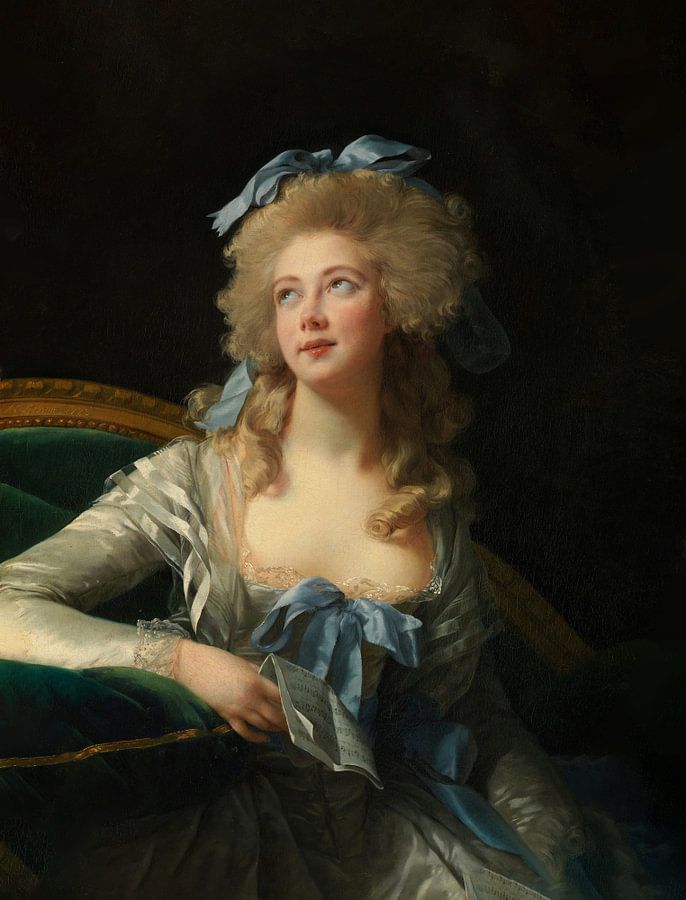Marie Louise Élisabeth Vigée-Le Brun
Louise-Élisabeth was een dochter van kunstschilder Louis Vigée en Jeanne Maissin. Haar eerste vijf levensjaren werd ze verzorgd door een boerenfamilie bij Chartres, terug in Parijs verbleef ze in het internaat van een kloosterschool.+
Vanaf 1767 woonde ze thuis en kreeg ze tekenles van haar vader die echter hetzelfde jaar nog overleed. Daarna studeerde ze bij Gabriel Briard en Horace Vernet. Ook Jean-Baptiste Greuze had invloed op de ontwikkeling van haar neoclassicistische stijl.
Vanaf haar 15e verdiende ze haar geld met het maken van portretten, al moest ze in 1774 haar atelier tijdelijk sluiten omdat ze geen licentie had. In 1776 trouwde Élisabeth Vigée met kunsthandelaar Jean Baptiste Pierre Le Brun. Ze ontwikkelde zich in de jaren 1770 tot een veelgevraagd portretschilder.
Ook koningin Marie Antoinette liet zich vanaf 1778 meermaals door Vigée-Le Brun portretteren; andere leden van het hof volgden
Op 31 mei 1793 werd Elisabeth Vigée-Le Brun , de beschermeling van de koningin, samen met haar rivaal, Adélaïde Labille-Guiard, opgenomen in de Académie Royale de Peinture et de Sculpture. In hetzelfde jaar exposeerde ze voor het eerst in de Salon.Vigée-Le Brun presenteerde met name een nieuw portret van de koningin die de "gaulle" of "blousejurk" draagt. Aangepast aan de Parijse mode door de naaister Rose Bertin, was deze mousseline jurk de favoriet van de koningin tijdens haar verblijf in het Petit Trianon , weg van het hof. De bezoekers van de Salon waren geschokt door dit portret: in hun ogen was de koningin niet gekleed zoals het haar rang betaamde. Dus het schilderij werd snel teruggetrokken.
Vigée-Le Brun schilderde vervolgens snel een tweede portret dat voor het einde van de Salon zou worden tentoongesteld. Ze herhaalde de pose van het eerste schilderij en kleedde de koningin deze keer in een klassieke blauwgrijze zijden jurk, waarmee ze de impliciete steun van Marie-Antoinette voor de zijdewevers van Lyon markeerde. De presentatie van dit tweede portret was een groot succes.
Vanaf 1767 woonde ze thuis en kreeg ze tekenles van haar vader die echter hetzelfde jaar nog overleed. Daarna studeerde ze bij Gabriel Briard en Horace Vernet. Ook Jean-Baptiste Greuze had invloed op de ontwikkeling van haar neoclassicistische stijl.
Vanaf haar 15e verdiende ze haar geld met het maken van portretten, al moest ze in 1774 haar atelier tijdelijk sluiten omdat ze geen licentie had. In 1776 trouwde Élisabeth Vigée met kunsthandelaar Jean Baptiste Pierre Le Brun. Ze ontwikkelde zich in de jaren 1770 tot een veelgevraagd portretschilder.
Ook koningin Marie Antoinette liet zich vanaf 1778 meermaals door Vigée-Le Brun portretteren; andere leden van het hof volgden
Op 31 mei 1793 werd Elisabeth Vigée-Le Brun , de beschermeling van de koningin, samen met haar rivaal, Adélaïde Labille-Guiard, opgenomen in de Académie Royale de Peinture et de Sculpture. In hetzelfde jaar exposeerde ze voor het eerst in de Salon.Vigée-Le Brun presenteerde met name een nieuw portret van de koningin die de "gaulle" of "blousejurk" draagt. Aangepast aan de Parijse mode door de naaister Rose Bertin, was deze mousseline jurk de favoriet van de koningin tijdens haar verblijf in het Petit Trianon , weg van het hof. De bezoekers van de Salon waren geschokt door dit portret: in hun ogen was de koningin niet gekleed zoals het haar rang betaamde. Dus het schilderij werd snel teruggetrokken.
Vigée-Le Brun schilderde vervolgens snel een tweede portret dat voor het einde van de Salon zou worden tentoongesteld. Ze herhaalde de pose van het eerste schilderij en kleedde de koningin deze keer in een klassieke blauwgrijze zijden jurk, waarmee ze de impliciete steun van Marie-Antoinette voor de zijdewevers van Lyon markeerde. De presentatie van dit tweede portret was een groot succes.



Muurmeesters bij mensen thuis
Benieuwd wat anderen van de kunst vinden? Wij laten de trotse interieurs en eerlijke beoordelingen zien van onze klanten.
Tussen de beelden door lees je lovende beoordelingen over de werken en onze service.
Een inspirerende uitnodiging voor je eigen Muurmeester.

Dit is Muurmeesters
Een Muurmeester is meer dan mooie kunst aan de muur. Ontdek oude meester schilderijen op (wisselbaar) fluweel of standaard doek. Met een moderne lijst met diverse kleuren. In samenwerking met diverse musea.







